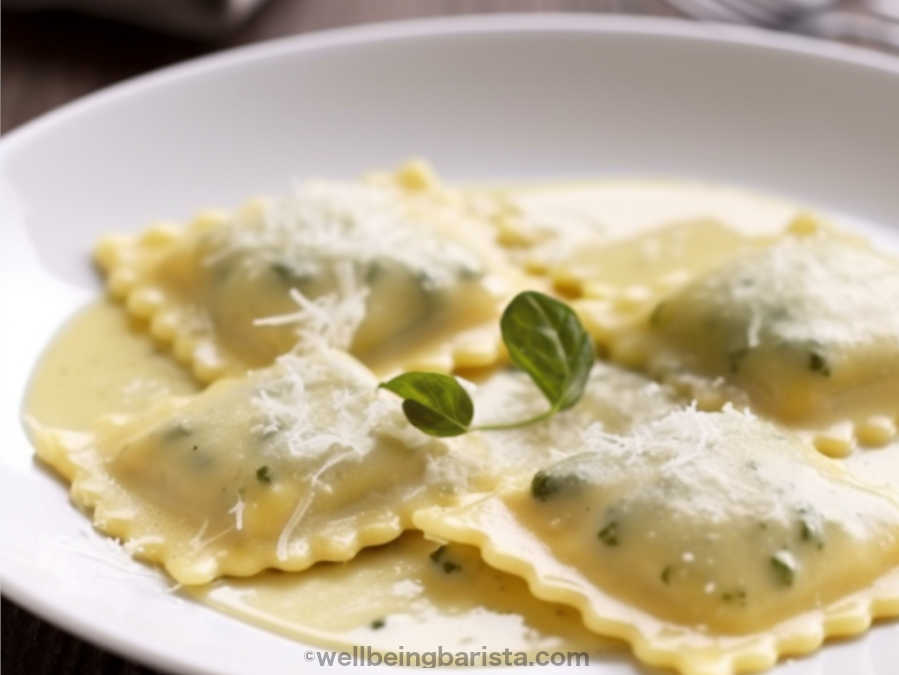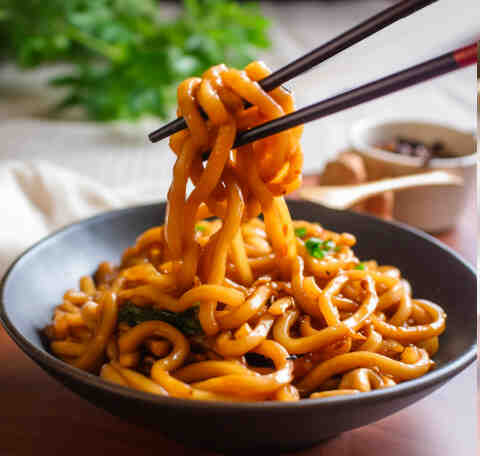Japchae Mandu Dumplings

“Japchae” is a Korean dish made with stir-fried glass noodles which are made from sweet potato starch and vegetables.
In Korean, “Mandu” refers to dumplings which are a versatile staple in Korean cuisine. It is a widely beloved dish enjoyed in various forms across Korea. Whether steamed, boiled, or fried, Mandu has a special place in Korean culture and cuisine. Traditionally, they are made with a combination of minced meat, vegetables, tofu, and various seasonings. However, in our vegetarian version, we’ll be replacing the meat with a medley of vibrant and nutritious vegetables.
Why you’ll like it
- Stir-fried glass noodles
- Vegetable filling
- The dipping sauce
- Steamed chewy texture or deep-fry

Tips
- For this recipe, I’m estimating an average serving size of 6 dumplings per person.
- Please note that the nutritional information provided is based on steaming the japchae mandu.
- If you choose to fry your dumplings, be aware that the calorie count may increase.

Variations
- Try Bibim Mandu dumplings filled with a mixture of vegetables, tofu, and sometimes meat. They are typically boiled and then seasoned with a spicy and tangy sauce.
How to Serve the Japchae Dumplings?
Serve the dumplings steamed or fried according to your preference, and enjoy dipping them in the accompanying sauce. Whether for a weekday dinner or a gathering with friends, preparing a large batch ensures you have them on hand for busy days.
Another creative option is to incorporate them into your Korean soup or tteokbokki. Just be mindful not to add too many, as they can be quite filling.

Health Info
| Calories: | 293.9kcal |
| Sugar: | 2.18g |
| Sodium: | 640.9mg |
| Fat: | 7g |
| Carbohydrates: | 49.1g |
| Fiber: | 3.4g |
| Protein: | 11.1g |
Description
Ingredients
For the Dumplings
- 36 dumpling wrappers
For the Vegetarian Japchae
- 3 ounces glass noodles sweet potato noodles
- 1/2 white onion shredded
- 1/2 carrot medium size, grated
- 8 dried shitake mushrooms
- 8 ounces tofu firm
- 1 tablespoon ginger minced
- 2 tablespoon soy sauce light
- 1 tablespoon sesame oil toasted
- 2 cloves garlic minced
- 1 teaspoon sugar
- salt to taste
- pepper to taste
- 1/4 cup green onions for garnish
- 1 teaspoon vegetable oil for frying
For the Dipping Sauce
- ½ teaspoon sugar
- 2 tablespoon soy sauce
- 1 tablespoon rice vinegar
- 1 tablespoon water
- 1 green onion sliced
- 1 tablespoon sesame seeds
- ½ tablespoon gochugaru Korean red pepper flakes
- ½ teaspoon sesame oil
Instructions
For the japchae
- Cook the glass noodles according to the package instructions. Check the texture before draining. Then rinse with cold water, and set aside.
- Heat some vegetable oil over medium heat in a large pan.
- Add minced garlic and stir-fry until fragrant.
- Add the onions to the pan and stir-fry until they are translucent.
- Add the carrots and cook until they are slightly tender.
- Add the shitake mushrooms.
- Season with salt and pepper to taste.
- Add the cooked glass noodles to the pan and mix well with the vegetables.
- Add the tofu and crumble into small pieces. Mix well with the vegetables and glass noodles.
- Drizzle soy sauce, sesame oil, and a sprinkle of sugar over the mixture. Stir-fry for a few more minutes until everything is evenly coated and heated through.
- Remove from heat and let the filling cool.
For japchae dumplings (mandu)
- Take a dumpling wrapper and place a spoonful of the Japchae filling in the center. Moisten the edges of the wrapper with water, fold it in half, and seal the edges tightly to form a dumpling. Repeat until all the filling is used.
- Steam the Japchae Mandu for about 10-15 minutes in a steamer or a large pot with a steamer basket, until they are cooked through and the wrappers are translucent.
- Serve the steamed Japchae Mandu hot, garnished with chopped green onions. Enjoy them on their own or with a dipping sauce of your choice.
For dipping sauce
- Mix all the ingredients together and serve with the Japchae Mandu.
Tips
- In this recipe, I’m assuming each person would take 6 dumplings each.
- I’m assuming that you will steam your japchae mandu when counting the calories, macros and other nutritional information.
You might like more…







I always spent my half an hour to read this web site’s articles all the time along with a mug of coffee.